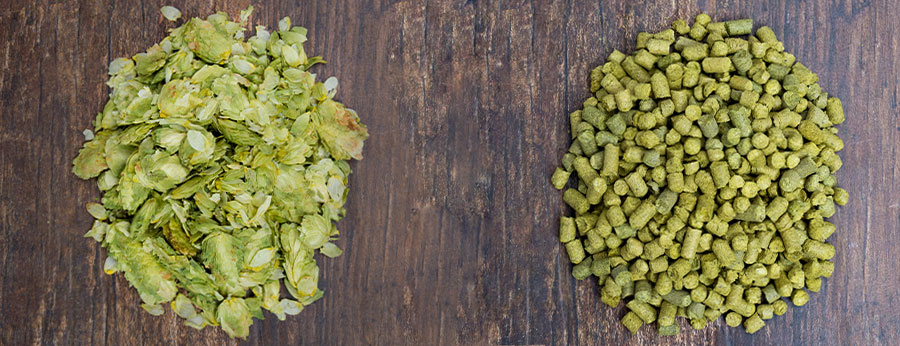The Largest Hop Varieties Database
Beer Maverick has compiled the largest and most extensive database of current beer hop varieties and their details. We’ve scoured the internet looking for acid percentages, cohumulone levels, hop substitutes, common beer styles and aroma profiles for over 300 of the most current and often used hops.
Don’t forget to check out our Hop Comparison Wizard as well as the Hop Substitution Chart.
Hops Purpose in Beer
What we know as hops today are actually the hop cones off the hop plant. They only grow under ideal conditions, which includes the perfect weather patterns. This is why most US hops are grown in the Pacific Northwest. The annual hop harvest brings craft brewers from all around to select and choose the hops that they will then use for the upcoming year.
Hops are used to impart bitterness (bittering hops) and aromatic flavors (aroma hops) to beer during the brewing process. However, certain compounds added by hops also possess antimicrobial properties. The iso-alpha-acids in particular add strong antibacterial qualities against certain strands of bacteria, which help protect the finished beer from spoiling.
In historical times, “gruit” or other vegetation were used to add bitterness to beer. However, they were quickly replaced by hops, as they were found to do a better job at keeping the beer stable and safer over longer periods of time.
All hops are classified as bittering, aroma or dual-purpose varietals, each corresponding to their typical use cases in brewing beer. In general, bittering hops are added early in the boil, aroma hops are added late in the boil and as a dry hop. Dry hopping is a process where you add hops to wort that has cooled down and has been fermenting for at least a day or two. Dual-purpose hops can be used at any stage of the beer production process.
How Do Hops Get Their Aromas?
Aroma hops have the strongest and most intense flavors and aromas. These flavors and aromas stem from their essential oils like myrcene, humulene, and caryophyllene. Most of the time when you see that a beer has grapefruit flavors, it does not actually have any grapefruit juice in it. The flavors are all from an aroma hop that gives off the same chemical compounds that a grapefruit does, thus making it smell and taste like grapefruit. These flavors can range from tropical fruit to dank to grassy.
Where Did the Data Come From?
If we are asking you to trust our site full of data, we should give you as much information about how it was collected. Our hop database with well over 300 distinct cultivars was populated with data from a variety of sources, including but not limited to:
- Hop Farms (like Crosby, BSG, Haas, etc)
- Hop Breeders (like Hopsteiner, Great Lake Hops, HBC, Yakima Chief Ranches, NZ Hops, etc.)
- Hop Sellers (like Yakima Valley Hops, Northern Brewer, etc)
Unfortunately, many times these sources provided information that was different or blatantly contradictory for the same hop. In many cases (like for alpha acids, oils) we simply expanded the range of that particular value we provide to you. This should create the most accurate average found anywhere online.
We’ve normalized a lot of non-numerical data as well. All aroma tags, countries, IDs, beer styles and hop names have been normalized throughout our full database. We can safely say that this database is the most extensive and most accurate of any hop DB anywhere.
Beer Maverick has complete information on just about every hop ever used in brewing beer. From the most popular like Citra and Centennial hops, to the newest like unnamed USDA varietals.
Hop Information Available as API
In creating our own products, we also developed a robust API to deliver the data. While the API is currently only available for internal use, we may consider opening up access to it if a business case arises. Please contact us to find out more.
The Hoplist – Hops by Country of Origin
All 300+ hops we’ve compiled data on have been broken down by their common country of origin. While hops are grown all over the world, there are a few countries that produce the best quality hops. Obviously, the US and Germany grow a lot, but Australian and New Zealand hops have become super popular lately due to their intense flavors and fruity qualities.
Click on each hop to view its brewing values as well as aroma profiles, substitutes, and commonly paired hops.
If you see an error in our hop data, please let us know!
